How to Build an Effective Lead Generation Sales Funnel


Are you looking to generate leads for your business?
If so, you'll need to create a functional lead generation sales funnel.
Let’s see how to build an effective funnel with the help of social proof!
Lead Generation Process - Definition
A lead generation is a process of finding your prospective customers and getting their contact information.
The process includes multiple steps and can include various strategies.
I will guide you through two of the most crucial parts of the process: lead capture and lead qualification.
This way we acquire the right words that help us understand the sales funnel process.
1. Find and Capture Leads
Leads are people or businesses that could be potential customers.
They have some kind of need that your product or service can fulfill.
Sometimes leads are warm (=inbound leads) and have found your business by themselves by proactively searching for a solution for their problem.
However, many times leads are cold (=outbound leads) and don’t necessarily even know that they have a pain point, much less that you could help them. This is especially true for B2B clients.
Thus, you need to adapt different tactics to be able to reach both kinds of leads.
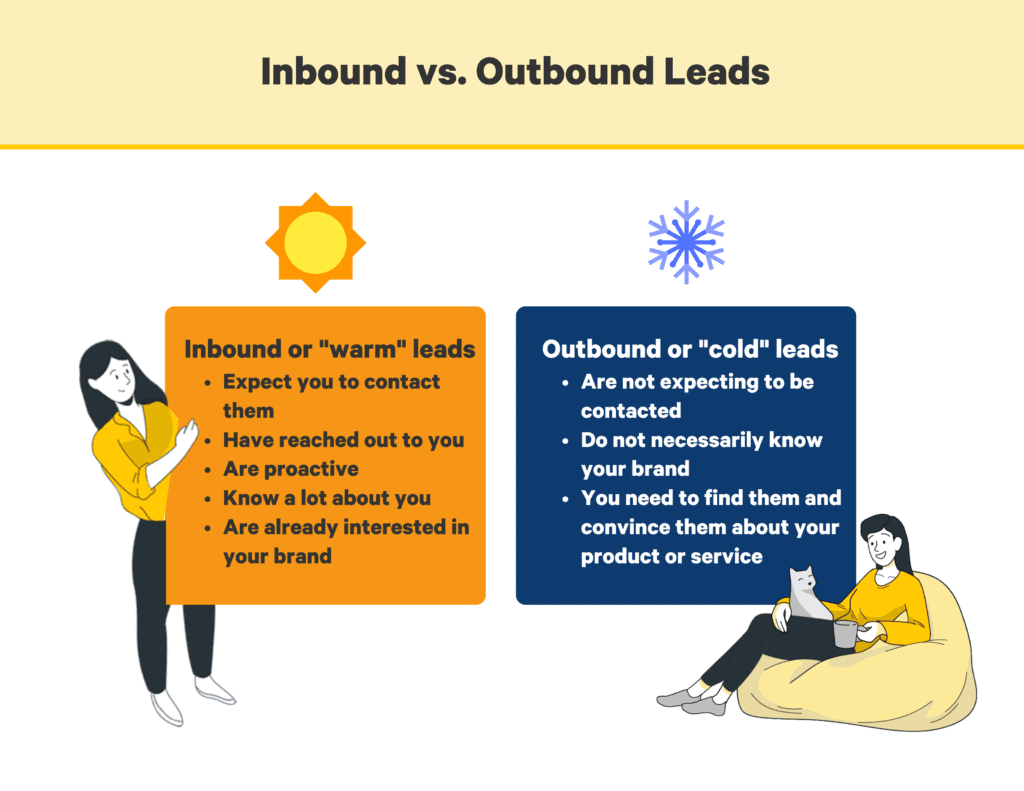
Inbound Lead Generation
In order to get warm leads, you'll need to create awareness of your product or service. You can do this through marketing and advertising.
To capture leads, create an attractive lead magnet that brings in people who are interested in the topics around which you work.
A successful lead magnet is something that
1. Creates value for your target audience
2. Pulls people organically to your website
3. Is so interesting that people are ready to exchange their contact information for content
4. Highlights your expertise in the field
Another great way to get warm leads is to have your existing customers recommend your services to their friends and network.
Outbound Lead Generation
In order to capture those cold leads, you have to contact them and convince them about your expertise.
Cold calling, cold emailing and paid advertising are one of the most used outbound lead generation tactics.
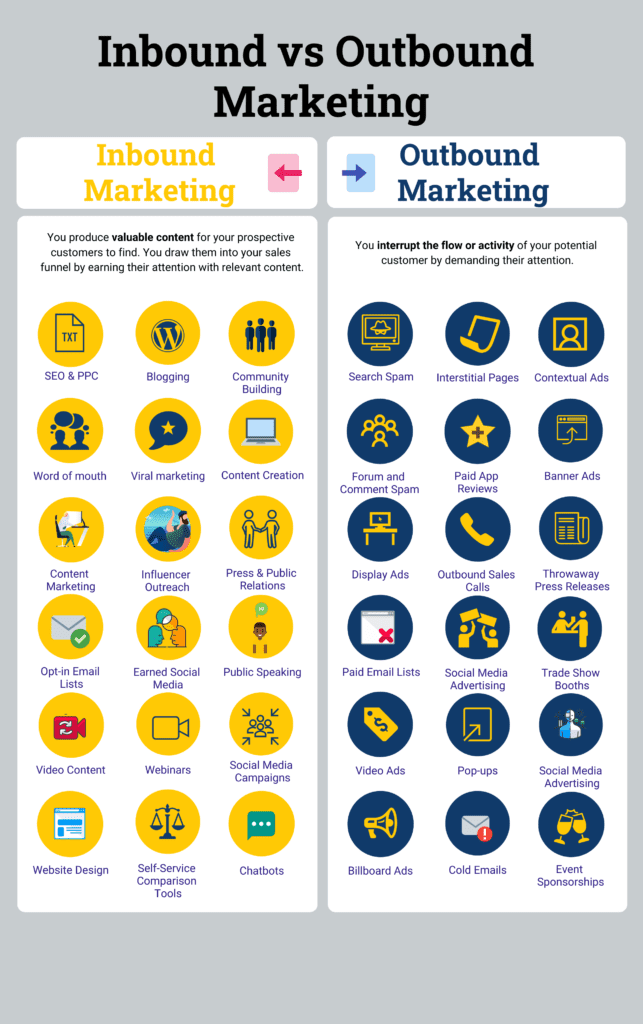
Are you looking for the best lead generation tools for your lead generation process?
See our list of best tools for lead generation and lead generation websites.
See also tips on an effective lead generation strategy for
2. Qualify Your Leads
There are different types of leads, and some of them are closer to an actual purchase than others.
| Type of lead | What it means |
| Marketing Qualified Lead (MQL) | Is interested in your business but not ready to purchase. Nurture these leads further down the sales funnel. |
| Sales Qualified Lead (SQL) | Has expressed willingness to purchase. Start negotiating! |
| Product Qualified Lead (PQL) | Someone is using a free trial of your product and service, but not bringing in money. Find out if they would be interested in purchasing. |
| Service Qualified Lead | Has interacted with customer service, and might be interested in a purchase. Be in touch! |
There are three factors that tell you who is a high-profile SQL:
- Need: they have a need that you can fulfill or problem you can help solve
- Interest: they are especially interested in your product or service over all other options
- Capability: they have the means to buy from you. They must have the budget and authority to make a purchase, and if the service is location-based, they must be located near you.
If any of the three factors is missing, you are probably not going to get a deal.
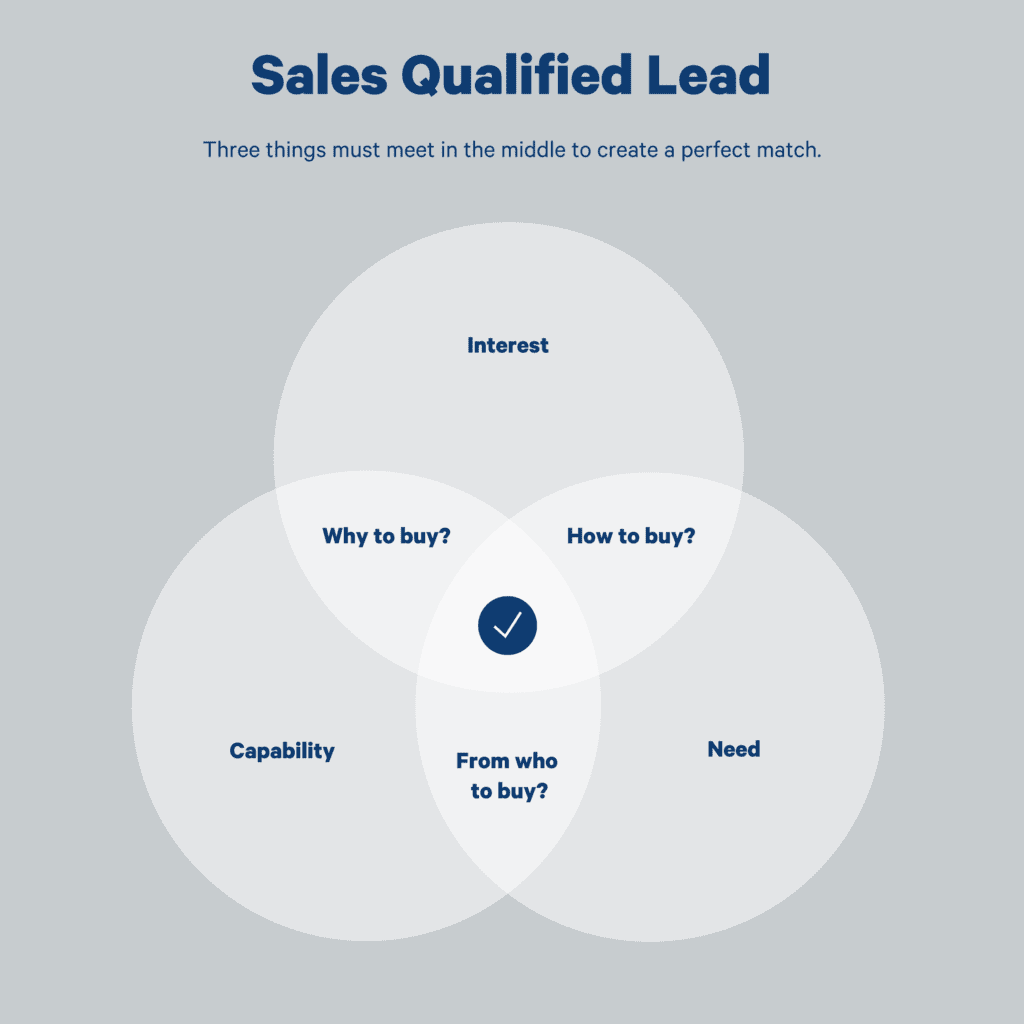
To find out who are the most qualified leads, you need to learn more about the prospective customer.
Usually it is the marketing team who brings in the leads, and the sales team needs to do the qualification. This can take lots of time and cost you money.
However, there are tools that let you oursource at least part of the lead qualification process.
Try lead generation forms or lead generation chatbots.
You can plan the forms and chatbots to ask the right questions that help you find more qualified leads.
Sign up for a free trial at Trustmary and start creating your own lead generation forms, popups and chatbots!
You can also try different lead scoring methods to find out who the most lucrative potential customers are.
Build A Functional Lead Funnel and Boost It with Social Proof
Now that we know what we are talking about, let’s dig into the actual lead generation sales funnel.
Lead generation funnel, sales pipeline: those are familiar terms and widely used in marketing and sales.
Lead funnel is a concept that refers to the process of guiding your prospective customers from the awareness stage into the sales process.
The start of the funnel is wide and includes all initial interactions. The further down the funnel we go, the less leads we have, but the remaining ones are more and more qualified.
In the end of the funnel we have customers: those who have actually made a purchase.
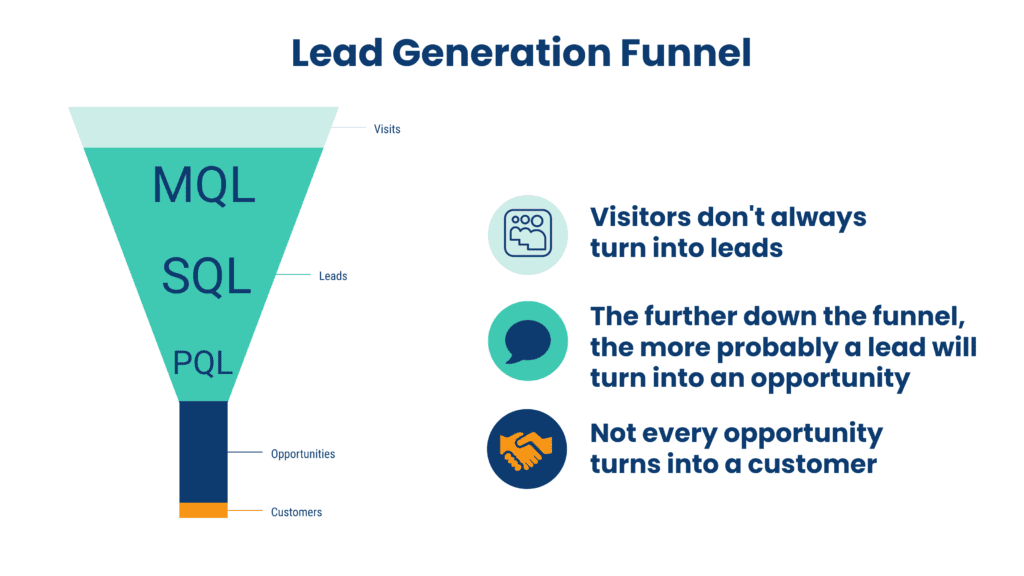
You get the basic idea. Now, let’s break down each stage of the funnel and how to perfect them.
Stage 1: Visitors (Top of The Funnel)
The top of the funnel is all about creating awareness.
You have to do active marketing and advertising to make people aware of your existence.
First step to generating awareness is to know who your target audience and ideal customer is. Whose awareness are you trying to grab?
After that is sorted, think about what is the most effective way to reach them.
Advertising on social media platforms, search engines and even in billboards and road signs are ways to signal that your business exists. Cold calling is also a great tool for B2B lead generation.
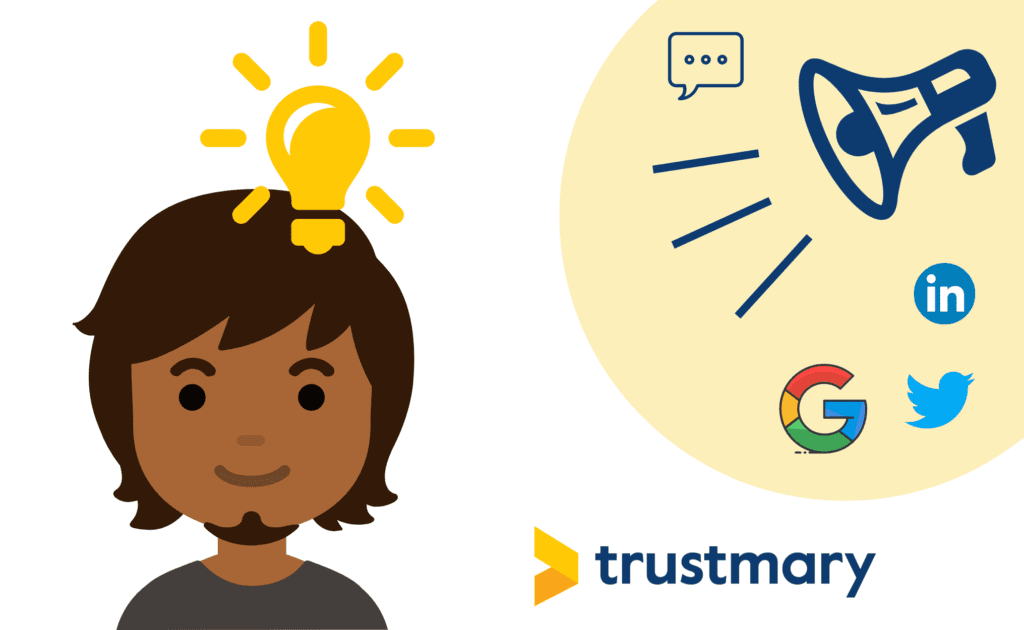
Stage 2: Capture
After you have generated awareness, you need to focus on catching potential interest of prospects.
Generate interest with attractive content marketing and sales pitches that bring value to your target audience and drive traffic to your website (maybe even gets your phone ringing!).
Showcasing testimonials and video testimonials (=social proof) on your landing pages is a great way to make you instantly look trustworthy and interesting and convert website visitors into leads.
In order to capture the potential lead’s contact information, place CTA’s near the testimonials and other content, or create gated content that requires submission of contact details.
Be creative!
Stage 3: Leads (Middle of The Funnel)
At this point, the funnel has become narrower. Those people who are truly interested in your product or service are left = your leads.
At this point, your job is to qualify leads.
Part of them are marketing leads who require a bit more nurturing in form of e.g. social media posts and email marketing, while others are ready to discuss purchases.
Try to move them further down the funnel by presenting your value proposition and exhibiting previous success stories.
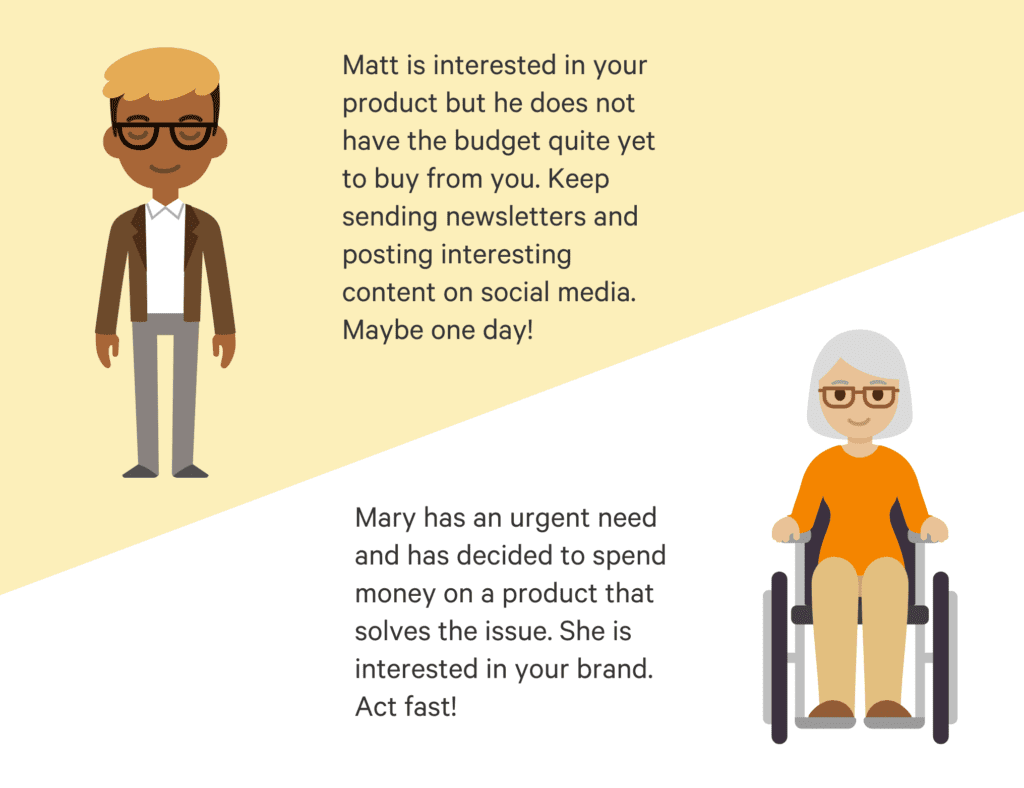
Stage 4: Opportunities (Bottom of the Funnel)
Only a small percentage of the visitors and leads become genuine opportunities.
At this point we have moved away from the realm of marketing, and it’s the sales team’s job to finish the funnel.
You might believe that social proof has nothing to do with sales, but think outside the box.
What if you include a video testimonial on your sales deck or offer email? Boom.
Stage 5: Customers
Congrats, now the potential leads have turned into paying customers! You have reached the finish line, the race is over! Forget about it and move on to the next one!
Wait, what?
❌
Of course you should NOT ABANDON the customer! You want them to be happy and return over and over again.
This is clear for everybody. More sales is more sales, and everyone wants to maximize the customer lifetime value.
But did you notice that we got this customer partly thanks to testimonials? Where do testimonials come from?
That’s right. Take good care of your customers to make them into promoters who will help you with getting new prospects.
Start measuring NPS regularly.
It's the best method for measuring customer loyalty, ofc.
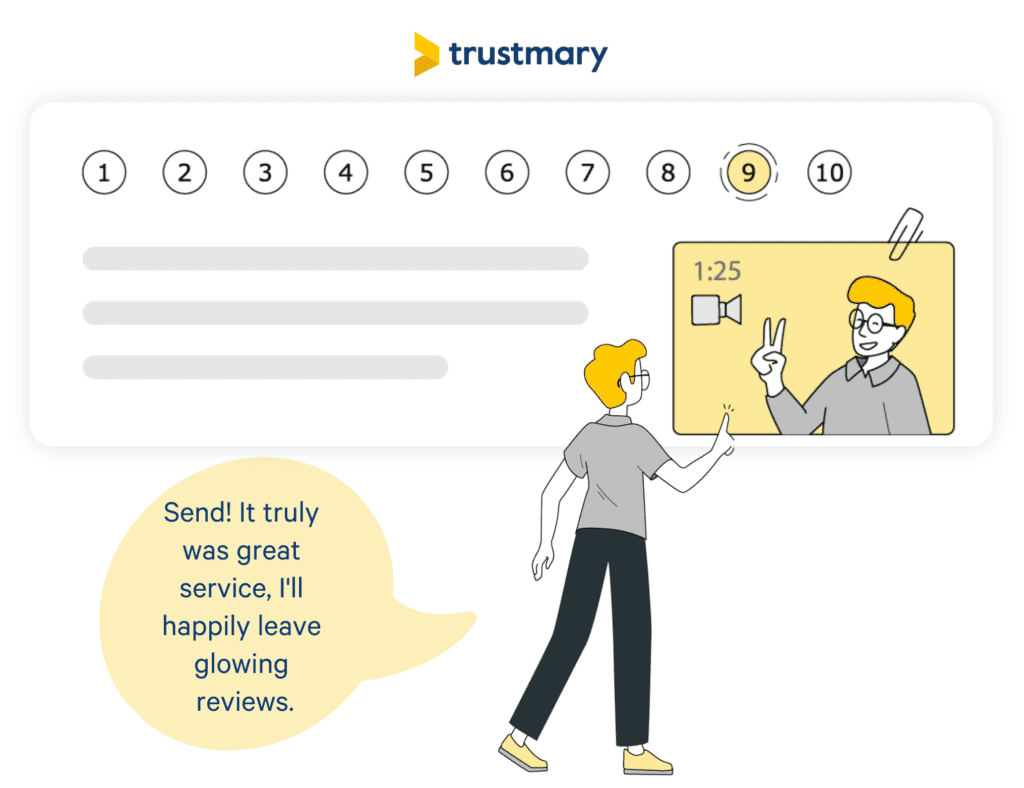
Effective Lead Generation Funnel… Or Rather, Flywheel
The funnel is a handy tool for picturing the lead generation and sales process.
However, we believe that the process should not have to stop at the first purchase.
Your happy customers have a tremendous impact on new potential customers, if you know how to leverage their experience.
Promoters are the customers who are satisfied with your collaboration and are ready to shout it out for the world to hear.
They are in the very last stage of the customer journey, and often they are seen as the end goal of customer experience.
However, you should not forget them at the end of the funnel! Give them an opportunity to share the love, and let the new prospects see it in every stage of their journey.
That’s why we like to picture the customer journey as a flywheel rather than a funnel or roadmap.
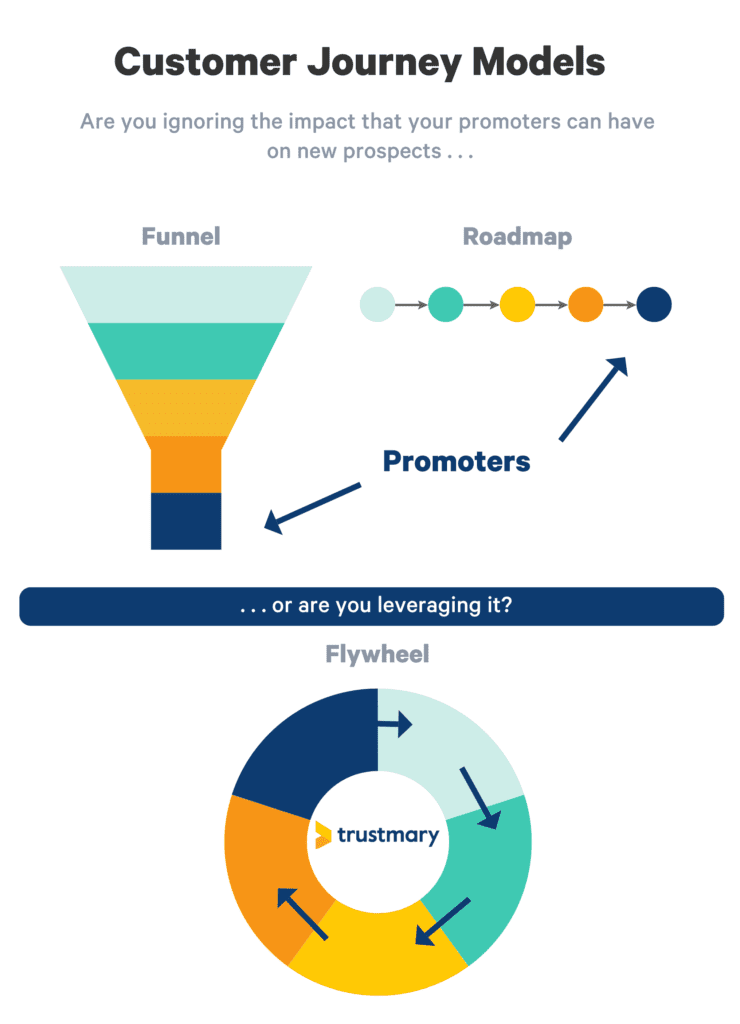
The Role of Social Proof Explained
We talked a lot about social proof, but what is it really and why should it be added to the marketing efforts?
Building an effective lead generation and sales process requires trust between the business and the customers.
But people are cautious, especially with new products and brands they don’t know yet. It is not easy to get trust and credibility as a new business.
What would you do when you want to know more about a new thing you have encountered?
Personally, I would ask my friends and family for experiences. If they don’t have any, I would search for online reviews.
If other people have had good experiences (or bad…) with a particular brand, I think that it will be the same for me.
That is called social proof.
Social proof can be showcased in many different ways. The rule of thumb is that people like to follow other people.
Some of the best social proof tools are reviews, testimonials and video testimonials.
When your happy customers publicly speak about their experience, social proof is generated.
“Sounds like it worked great for all these people. I have to test it out, too!” - Your potential customer after seeing testimonials.
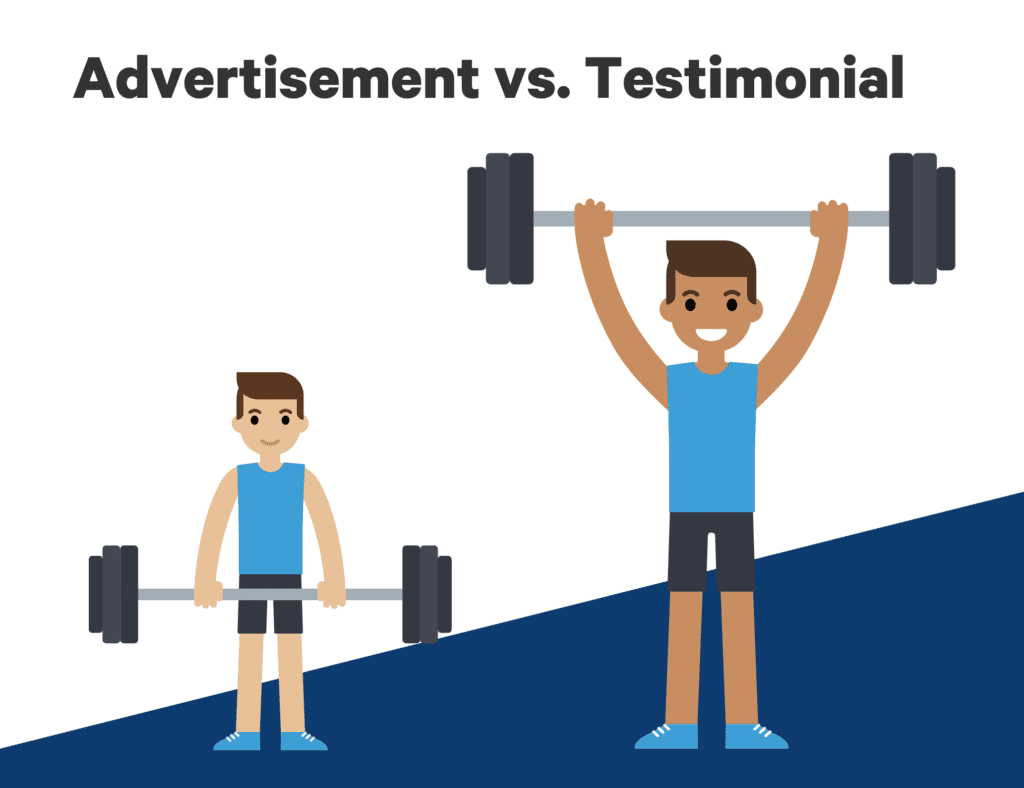
Here’s how it works in practice:
- Your prospects see the testimonials on the landing page or social media.
- They get affected by social proof!
- They become your clients, and you make sure that they are satisfied with the service.
- You conduct feedback surveys to find out your clients’ opinions and collect comments.
- The positive feedback can be turned into testimonials and video testimonials = social proof (while negative and constructive feedback is used to develop processes).
- The testimonials are embedded to your website and social media, where the prospects see them.
- Prospects convert to clients.
- And so on.
Testimonials and video testimonials are present in each stage of the lead generation process to boost your conversion rate and convert leads.
Feedback is an important part of the business operations, and it concerns everyone in the company.
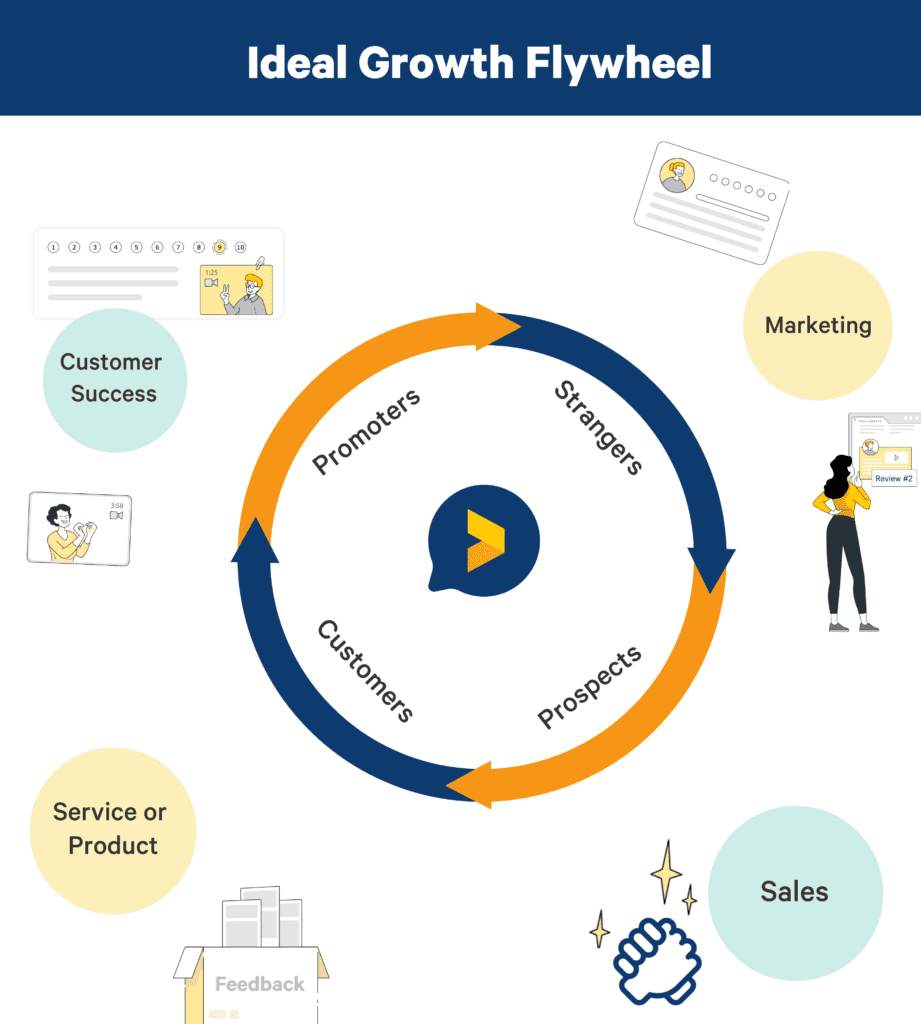
That’s the way to business growth! 👆
Conclusion and Next Steps
We have learned how to build an effective lead generation sales funnel with the help of social proof, such as testimonials, video testimonials and reviews.
Now, what is the easiest way to start implementing this advice?
Sign up for a free trial at Trustmary to start collecting testimonials and growing your business!
On top of unlimited testimonials and video testimonials, you can also:
- Import existing reviews from Google, Yelp, Facebook, and other review sites.
- Add elegant and dynamic testimonial widgets to your website.
- Get chatbots, popups and lead generation forms supercharged with social proof.
- Create personalized customer surveys for multiple uses.
- Reporting and A/B testing for finding the most effective elements to boost conversions.
- Super fast and professional customer service!
What are you waiting for?
FAQ
How to build an effective lead generation sales funnel?
To build an effective lead generation and sales funnel, you need to define who is your ideal customer and choose the right tactics to catch their attention and move them further down the funnel. This is best done by showcasing how amazing results your previous and existing customers have reached with your help.
What are the stages of lead generation funnel?
There are many ways to describe the stages of the funnel. There is the Top, Middle and Bottom of the funnel (TOTF, MOTF ad BOTF) which consist of stages like initial awareness, visitors, interest, leads, opportunities and customers.
How to use social proof in lead generation and sales funnel?
Social proof is a powerful way to get new leads and customers. When you collect experiences from your happy customers and showcase them to new customers in the form of testimonials and video testimonials, the new customers get an idea of what are the advantages of your service. It also builds trust and credibility for your business.